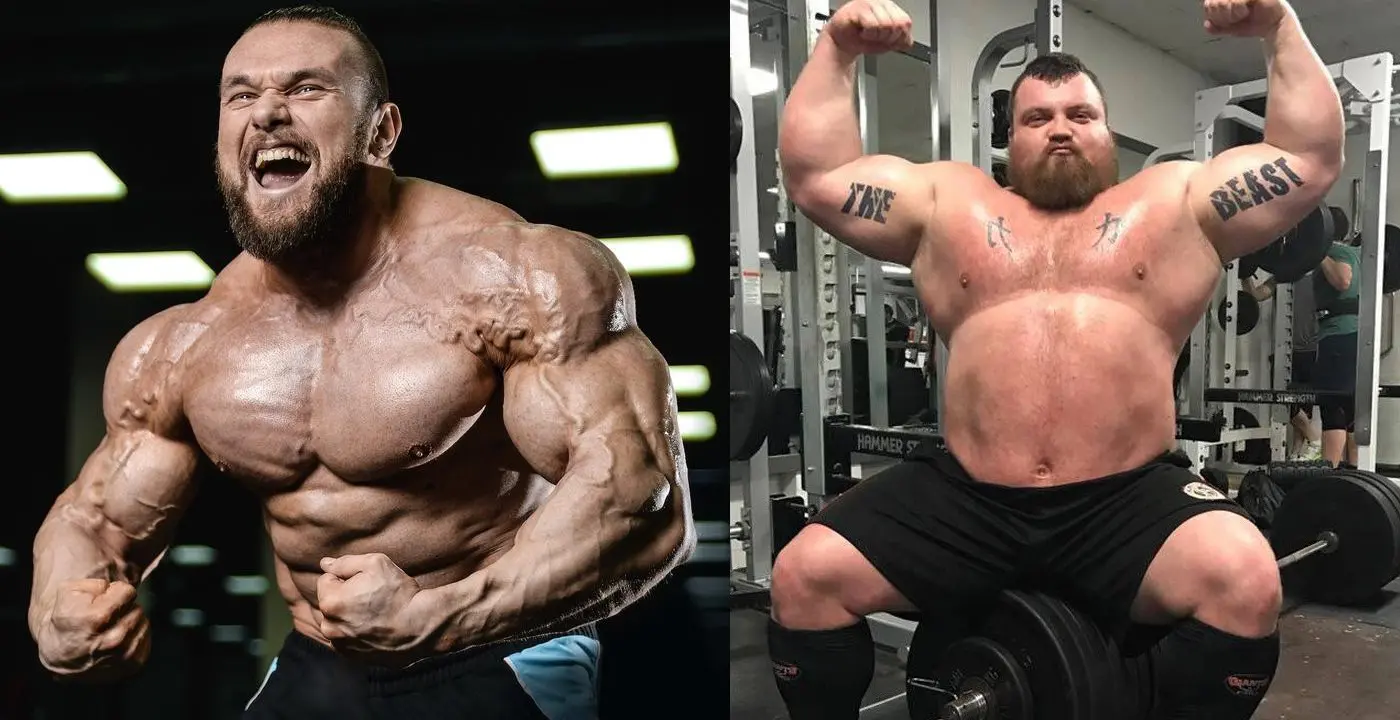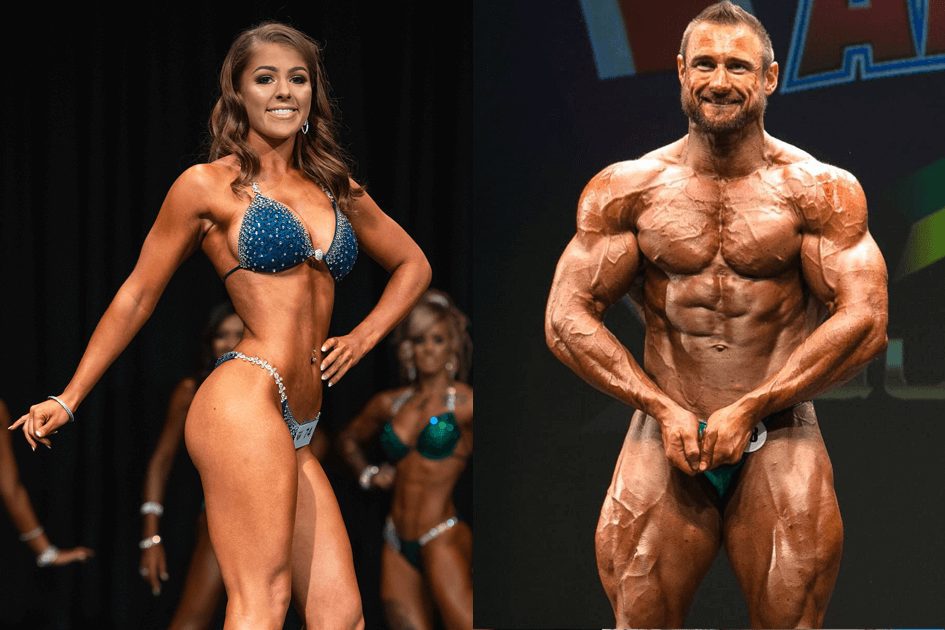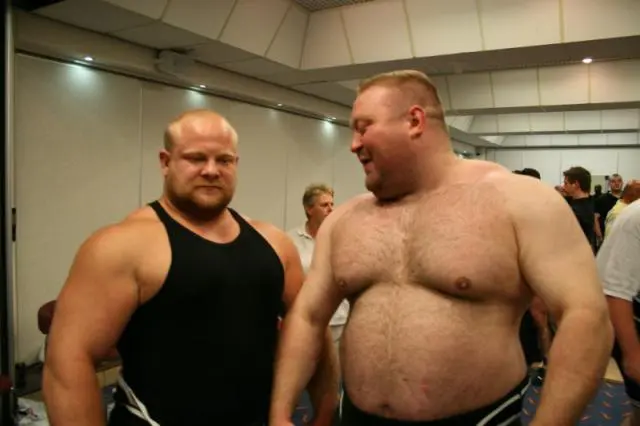
The best online fitness resource you'll ever need. We filter out the BS to ensure you meet your health and fitness goals!

The best online fitness resource you'll ever need. We filter out the BS to ensure you meet your health and fitness goals!

It’s the age-old question you’ve heard asked hundreds (or even thousands) of times before; which one is better, bodybuilding or powerlifting?
Is there a clear and definitive winner out of the two? In this article, we will attempt to put an end to this feud once and for all, and crown the true king of the gym (or was it king of the North?)
If you are relatively new to the world of weightlifting, a point will come when you inevitably choose a specific type of discipline to focus on going forward. Before randomly making that choice, it is good to know what you’re getting yourself into. Here is a simple explanation of the two primary forms of strength training-

The key premise of powerlifting revolves around building strength in an effort to achieve an ever-increasing one rep maximum throughout a single plane of motion. A single plane of motion simply means moving a weight in one direction, with the three big powerlifting moves being the squat, bench press and deadlift.
Sounds simple enough right? It can be, but powerlifting is not all rainbows and unicorns. Consistently increasing your maximal strength output requires self-control, and starkly shows if you were exposed to bodybuilding like training prior in your life. How? Because bodybuilding usually emphasizes muscular failure.
In powerlifting, it is not unusual to perform very few actual sets to muscular failure, and many times you are unlikely to even do that. This is because your primary goal is not to fatigue muscle fibers in order to stimulate hyper trophy, but rather to reinforce neuromuscular connections and enhance force that can be generated in that manner.

99.9% of people that are new to working out will be ushered into a bodybuilding like routine. Almost cult like, this is probably because it is often believed that bodybuilding and powerlifting is universally the same, when in reality this is far from true.
Most casual fitness trainers have a basic understanding of bodybuilding, so it is not uncommon for them to structure training routines for you based on hitting multiple muscle groups in a single training session and thoroughly fatiguing each in an effort to kick start the muscle building process.
For this reason bodybuilding is often considered a vanity sport, focusing on muscular growth and symmetry as opposed to actual raw strength. This is achieved through a combination of several lifts, including the big three of powerlifting, but also a variety of supporting movements that help to ensure that the many smaller muscle groups are also exposed to the training stimuli necessary for muscles to grow.
Now that you have a basic understanding of exactly what bodybuilding and powerlifting entails, it’s time for you to understand the similarities that both training styles possess.
Both Disciplines Make Use Of Periodization/Phases
In order to be successful at either one of these disciplines, you need to make a plan. Without a doubt, the number one reason many people look the same year after year despite working out diligently day after day is due to the fact that they heading to the gym with no clear plan in mind.
It is a horrible idea to just wing it and do what you feel like doing on any particular day. Not only is this likely to cause neglect of specific muscle groups (umm legs, gentlemen?) But makes it much more difficult for you to track any sort of real progress you’re making.
Mixing up your work out at every single interval is a horrible idea, even though changing things up every few months can be a powerful tool. Let’s say you did a few sets of squats in your previous work out as your first exercise that day, using 225 pounds. Without a proper way to document exactly what you did, number of repetitions and more, good luck trying to mentally remember every single detail.
In addition to the burden of even having to do that, progression is more than just trying to “increase, increase, and increase” every single time. The body does not work that way.
Periodization is all about strategically peaking your work out intensity for a limited time once every couple of weeks. For bodybuilders this might mean going hard into their training routine and diet in order to squeeze out every last ounce of muscle gain during the off season, usually before taking the foot off of maximum throttle and starting conditioning, while for the powerlifter it might mean the final stretch in achieving a gut wrenching PR before CNS (central nervous system) burnout kicks in.
CNS burnout occurs when the nervous system is unable to send sufficiently strong electrical neuromuscular impulses to cause muscle contractions that consistently move heavy weight. The first sign of this occurring is failure over several subsequent workout sessions to move the same or heavier weight as the previous step in the training plan.
Exercise Choice Isn’t That Different
Even though power lifters tend to emphasize the big three lifts, this does not mean that these are the only movements they ever do. In fact, power lifters also perform barbell curls and triceps presses, it’s just that such movements are considered more of accessory lifts than core staples, and are performed towards the end of training sessions after successfully doing your big lift.
Bodybuilders, on the other hand are very likely to have a dedicated arm day, or a split that treats arms as a primary target. So a bodybuilder might perform three or four biceps specific movements in an effort to thoroughly fatigue muscle fibers, not so much concerned about the maximal lift for any specific movement.
Diet And Rest Is Paramount To The Success Of Either
Without a doubt, if you do not invest enough time into sleep and nutrition, you’re bound to fail either of these disciplines. Have you noticed the fact that the word “discipline” is mentioned several times in this article? It’s because both powerlifting and bodybuilding require an immense amount of it. You would get nowhere worth mentioning if you lack the discipline to consistently do what is necessary to support the goal.
Good luck trying to gain any sort of muscle mass without fueling the body sufficiently, or sleeping enough to allow muscle recovery. Attaining both strength and size occur outside of the actual lifting process, so it makes no sense going balls to the walls in the gym and half-assing it everywhere else.
This is what tends to separate bodybuilders from power lifters, since there are actually several key differences between the two. These include:
Overall Appearance

Comparing the two types of athletes, one thing is immediately obvious; power lifters don’t appear to be that concerned with the way they look. Not saying all power lifters look like fat men, but they clearly don’t care much about displaying muscularity when compared to bodybuilders.
In order to be successful as a bodybuilder you must be able to display a high level of muscularity, which requires attainment of low body fat levels. This is far from easy, or everyone that starts a bodybuilding routine would look amazing.
Size Versus Strength
Again, comparing a bodybuilder and a power lifter, the first thing that is obvious is the fact that a bodybuilder is noticeable from a mile away. This is because aesthetics are very important to such athletes. Power lifters, on the other hand might not look that impressive, but should you compare the maximum amount of weight they can move in the gym, a power lifter is the clear winner.
Also notably different is the workout routine. A bodybuilding specific routine requires sufficient muscular fatigue, only achievable by performing a moderately high volume of exercises. This is why bodybuilding is sometimes referred to as the “Goldilocks” of weight lifting activities, since you must find a specific workload volume that allows you to consistently gain muscle. Too little, or too much and your efforts will be frustrating.
On the other hand, one of the most effective powerlifting principles involves low-volume, low repetition training. Whereas bodybuilders usually perform 6 to 12 repetitions in any particular working set, a power lifter does on average between two and five. This is necessary since muscular failure is the enemy of strength.
Consistently causing muscle failure on multiple sets does not facilitate improvements in the feedback system between the nervous system and muscles necessary to help you lift subsequently larger loads.
Diets
Diets will make or break a successful bodybuilder, but when it comes to power lifter, the approach is generally much more lax. A bodybuilder needs to fanatically calculate and refine macronutrient intake in order to tweak their appearance, for example, to help preserve muscle mass while encouraging the use of fat for fuel.
Power lifters for the most part eat what they want, given as long as they do hit minimum macronutrient targets. This lack of disciplined dieting shows, which is why the majority of power lifters carry around an excessive amount of body fat – often times far more than necessary to safeguard joints during heavy lifts.
Cardiovascular Training
Cardio is the dreaded word in bodybuilding circles, but is actually much more taboo if you are a power lifter. Bodybuilders are often mandated to perform cardio in order to promote caloric utilization to attain their ideal body fat/body weight goal.
Power lifters have no such motivation or requirement. You are very unlikely to meet the power lifter that is actively trying to increase daily caloric intake by performing cardiovascular training.
We would still advise that if you are into powerlifting that you perform light cardiovascular activity to benefit your cardiopulmonary system. Not to further any physique related goal but just in the interest of overall health.
To be fair, they each have advantages and disadvantages, so saying that one is better than the other would be a grave injustice. Of course, most people find themselves on one side of the fence or the other, but what about if more people just decided to sit on the fence?
This is my personal stance on the subject. Unless you have the desire to compete in one specific discipline, there is no need to limit yourself to just that one specific type of training.
I propose a hybrid style training comprising of taking the positives of both; a style known as power building.
I clearly recall a few years back having a discussion with a colleague about being a PowerBuilder. Not only are the vast majority of people naïve about what this training style involves, but are even resistant to consider it.
However, the benefits are unquestionable. For instance, there is the general consensus that power lifters who transition to a more bodybuilding like training style tend to display superior levels of muscularity than dedicated bodybuilders. This could be attributed to the greater efficiency of their neuromuscular system that has been forged over the years, or it could simply be due to the fact that actively focusing on limiting the amount of body fat accumulated from their training style yielded a better finished product.
One of the best manifestations of the power building hybrid model has to be pro bodybuilder and moonlighting power lifter Johnny Jackson, who uses a training style known as “dogg crapp” or DC for short.
This training style takes advantage of the lower and higher rep ranges of both disciplines, by combining effectively three very heavy sets into one rest-pause superset. So, it is not uncommon for an athlete to perform three sets of heavy reps in the vicinity of 4+3+2 for a total of nine repetitions, with it being classified as one working set.
The strength and muscle gain from this type of approach can be considered astronomical, but the high intensity also justifies overall scarcity of number of working sets. One rest pause superset is usually enough for most muscle groups, with the maximum of two occasionally used for larger muscle groups.
When it comes to bodybuilding and powerlifting, or their love child power building, it is not carved into stone that you must follow one specific model. Indeed, even though my personal preference may lie more on the fence by combining successful attributes of the two, that training style is very intense and might not be sustainable over the long term.
If, however, you are middle-aged or older, a bodybuilding like routine might be your best bet. By emphasizing better dietary choices, the addition of cardiovascular exercise and comprehensive training of the majority of muscle groups, you will be better equipped with overall health.
Powerlifting might be difficult to start at an older age owing to joint or cardiovascular issues, not to mention the fact that declining androgen levels play a role as well.
In terms of popularity, bodybuilding is the clear winner and overall “sexier” owing to mainstream media glamorizing it. Not to mention that women are far less likely to become powerlifters than physique athletes, since being beach body ready is the big thing.
All in all, the most important take away is to adopt a training style that has a positive benefit on your health, and always try to visualize how this fits into the future your envision years down the line. It is no secret that in order to make it as a top-level bodybuilder or power lifter the use of anabolic- androgenic steroids are often recruited (no judgment), but these may have a negative impact on you later in life.
In the meanwhile, get your ass in the gym and bust those plates, there is no better time than the present to start working on your goals- regardless of which you choose.